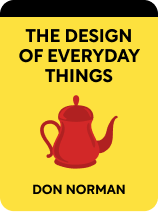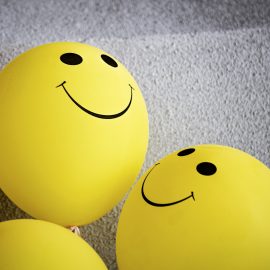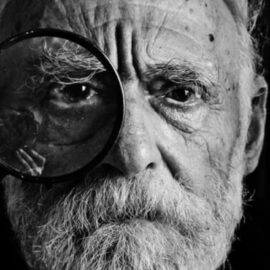

This article is an excerpt from the Shortform book guide to "The Design of Everyday Things" by Don Norman. Shortform has the world's best summaries and analyses of books you should be reading.
Like this article? Sign up for a free trial here .
What are the seven stages of action? How can this philosophy apply to design?
The seven stages of action refer to the way we interact with new objects. By using the seven stages of action, people are trying to figure out how things work, and if it worked when they used it.
Read more about the seven stages of action and how they apply to design.
Evaluating Behavior With the Seven Stages of Action
When we interact with a new object, we have two problems to solve: “How do I use this?” and “Did that work?” Author Don Norman calls these “the gulf of execution” and “the gulf of evaluation.”
- The Gulf of Execution refers to the process of figuring out what an object does and how to use it. This can happen either before using the object or while trying it out. Affordances, signifiers, and mapping are tools designers use to help users bridge this gulf.
- The Gulf of Evaluation occurs after using an object and refers to the process of evaluating what the device did and whether that action matched our goals. Feedback and accurate mental models are the most helpful tools for bridging this gulf.
The Seven Stages of Action
The gulfs above are important because they represent the two components of an action: execution and evaluation. We can break these down even further for a total of seven stages that take us from the impetus of an action all the way through to successful completion. (If seven distinct steps seems excessive, remember that for most actions in our daily lives, these stages play out completely unconsciously. We only become aware of them for tasks that are unfamiliar or confusing.)
A great example of this is driving a car. Experienced drivers make turns and merge into traffic without much conscious thought. The seven stages of action have become automatic through repetition, only requiring thought when something novel comes up, like construction blocking a particular road. New drivers, on the other hand, consciously think through every step. Where an experienced driver might think “I need to turn left,” a new driver would think “I need to slow down, check my mirrors, check for oncoming traffic, turn the wheel, hit the gas pedal with just the right amount of force, then turn the wheel back again.”
The seven stages of action are: goal, plan, specify, perform, perceive, interpret, compare. These steps carry the user across the gulfs of both execution and evaluation. The first stage, “goal,” sets the standard that will be used later to determine if the action was successful. The next three stages (plan, specify, perform) bridge the Gulf of Execution, while the final three stages (perceive, interpret, compare) bridge the Gulf of Evaluation. Each of these stages answers a particular question:
- Goal: What result do I want to achieve?
- Plan: What options do I have for achieving my goal?
- Specify: Which of these options will I choose?
- Perform: How do I execute my plan?
- Perceive: What happened when I did that?
- Interpret: What does that result mean?
- Compare: Did I reach my goal?
Let’s use the driving example again to see the seven steps in action. In that case, they may look something like this:
- Goal: I need to go grocery shopping.
- Plan: Should I drive to the store or take the bus?
- Specify: I think I’ll drive.
- Perform: I’ll follow the usual route to the store instead of a new one.
- Perceive: Everything went smoothly and I’ve parked at the store.
- Interpret: This means I can now go inside and shop.
- Compare: I’ve met my goal of going grocery shopping!
In the example above, the action was successful in achieving the goal. However, the goal of going grocery shopping is part of an overall system that includes both larger and smaller goals. For example, if I’m making a particular recipe but don’t have an ingredient I need, going grocery shopping would become a subgoal of my overall goal of making that recipe. Grocery shopping itself would have multiple subgoals: locating each ingredient in the store, loading the groceries back into the car, and so on.

———End of Preview———
Like what you just read? Read the rest of the world's best book summary and analysis of Don Norman's "The Design of Everyday Things" at Shortform .
Here's what you'll find in our full The Design of Everyday Things summary :
- How psychology plays a part in the design of objects you encounter daily
- Why pushing a door that was meant to be pulled isn't your fault
- How bad design leads to more human errors






